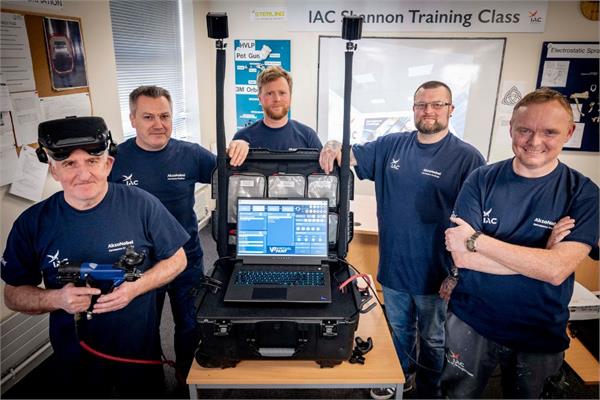
As AkzoNobel continues to expand the reach of its VR technology, the initiative stands as a compelling example of innovation driving both environmental progress and workforce development in aerospace coatings.
AkzoNobel Aerospace Coatings is marking the successful first year of its Virtual Reality (VR) paint training initiative, having secured strong international uptake and notable sales since its launch.
In just 12 months, 26 VR units have been deployed globally, with more than half now owned and operated by AkzoNobel’s customers. Early adopters – including OEMs, MROs, and training institutions such as Embraer, IAC, and The Machinists Institute – are already reporting significant benefits.
The technology has gained traction across all major regions, with systems active in the Americas, EMEA, and APAC. This global interest underlines the growing demand for innovative solutions that support more sustainable practices
in aviation. AkzoNobel began integrating VR technology into its training and technical support offerings in 2021. Building on initial success, the company launched a dedicated VR training programme in early 2024 under its broader Aerofleet Training+ portfolio.
The VR software places users in a virtual spray booth, replicating real aircraft parts and allowing trainees to adjust parameters such as coating thickness, overcoat times, and spray gun settings. It provides instant feedback on application accuracy, highlighting issues such as over- or under-coating, improper technique, or insufficient coverage. Key metrics such as gun distance, angle, and speed are tracked to assess and develop user proficiency.
Beyond training, the system delivers measurable operational advantages. It eliminates the need for physical paint or panels, reduces waste and VOC emissions, and cuts down on costs and downtime associated with equipment cleaning – all while improving safety and sustainability.
“With VR now an integral part of our Aerofleet Training+ offering, we’re enabling OEMs, MROs and educational institutions to train more painters, more effectively, and in a way that’s both sustainable and cost-efficient. The fact that many of our early customers are now investing in multiple units speaks volumes about the value it brings,” has stated Michael Green, Global Business Services Manager at AkzoNobel Aerospace.
International Aerospace Coatings (IAC), one of the first MROs to adopt the system, is now rolling it out worldwide. The company estimates that up to 70% of new apprentice training can now be completed in a classroom setting, without the need to spray actual paint. Thanks to its portability, the VR system is being used not only at IAC’s headquarters in Shannon (Ireland), but also at sites across the globe.
“This system has become a cornerstone of our training strategy. It mirrors real-life aircraft painting scenarios, allowing staff to develop and refine their skills before transitioning to live projects. It’s incredibly effective and provides us with flexibility in building a broader, more versatile skillset across teams. Our teams genuinely enjoy using the VR system – we’ve even had some friendly competitions. It’s a fantastic motivational and developmental tool that enhances our workforce while contributing to a more sustainable and efficient training process,” has commented John Mulqueen, Vice-President of Operations EMEA at IAC.